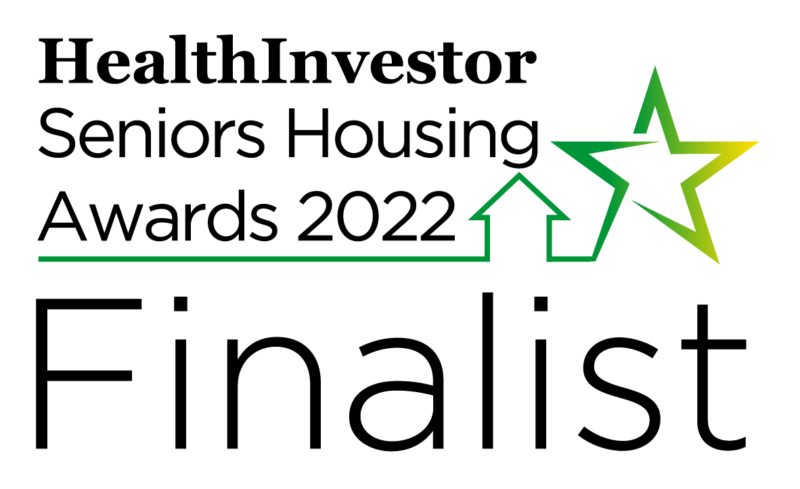Welcome to our quarterly insight into elderly care home trading performance trends and market conditions across Great Britain, analysing the newest data from Carterwood Analytics | Collab.
Quick links
- Key findings
- A closer look
- See how these essential metrics measure up in the markets that matter most to you
Key findings from 2022 Collab data
Collab is powered by accurate trading data, from real sector operators, including many of the top 20 operators in the UK.
Over the course of 2022 (1 January to 31 December 2022), data for Great Britain from our contributing operators reveals:
- Agency costs soared by 22% over the 12 months assessed, with the average cost per bed per month rising from £303 to £369, peaking at over £400 in Q3.
- Occupancy figures recovering to near pre-pandemic levels, with average occupancy for Q4 sitting at 85.4% (just short of pre-pandemic occupancy of 87.3%), a 3.6% increase from the previous year.
- Average weekly fees (from all funding sources) rose by 8.8%, from £940 to £1,023, an overall increase of over £80 per week.
- Self-funders continue to account for an increasing share of overall funding mix, showing a gradual but steady rise from 38% to 41%.
To use, simply hover each graphic to show the datapoints, and toggle to full screen mode to get a closer look (top right button).
Want to see the real trading conditions in the markets you care about?
Get instant access to actual, up-to-date occupancy, funding-mix, staffing costs and average weekly fee data for the markets that matter to you.
Discover Collab and book a demo today
Let’s take a closer look…
Staffing costs
The rising staff costs of the past two years reflect a deepening staffing crisis across the sector, which when combined with inflationary cost-pressures from energy and food bills, has created an extremely challenging trading environment for operators.
Collab data reveals the extent to which home age and CQC rating has impacted the staff costs incurred across our Q4 2022 dataset.
- Homes rated ‘outstanding’ have a higher average total staff cost per bed (12% above the GB average); however, homes that meet or exceed CQC standards show a far lower average agency cost per bed (up to 22% lower than the GB average
- Newer homes (registered since 2015) incur a higher average total staff cost per bed when compared to older homes (3% above the GB average)
- These elements also come into play when assessing a home’s average staff cost as a percentage of revenue, with newer and outstanding homes keeping their staff costs under 60% of revenue, whilst older and lower rated homes have higher staff costs proportionally
We view the levelling of agency staff costs seen towards the tail end of 2022 as a positive sign, indicating that, despite inflation and ongoing cost pressures challenging the sector and wider economy, operators have had a small respite from increasing agency staff costs. We predict future fluctuations in agency staff costs will be more in line with those seen in 2022, rather than the rapid increase seen in 2021, which we will reveal in our Q1 2023 Collab dataset, due to be released later in Q2.
However, with the 9.7% rise in the national living wage on the horizon in April, which will no doubt have a ripple effect, the stability of staffing costs may be short-lived.
Occupancy
There has been a sustained, encouraging recovery in average occupancy throughout 2022, which sat at 85.4% in Q4 2022 (up from 82.4% in Q4 2021). While the market is still slightly short of the pre-pandemic occupancy level of 87.3%, we are now reaching a point where, combined with increases in average weekly fees and self-funded referrals, incomes across the sector are in more robust shape than they have been since the pandemic struck.
Whilst London, the East of England and the North East (alongside Scotland and Wales) have enjoyed some of the highest occupancy rates across Great Britain in 2022, it is also worthy to note those areas that have seen the greatest growth in rates. In particular the South West, which although having had the lowest average occupancy rate in Q4, saw the largest increase in occupancy throughout the 12 months assessed, with a 5.97% increase between Q4 2021 and Q4 2022, the majority of the increase occurring in the last quarter.
We predict occupancy to continue this trajectory, encouraged by homes with an ‘Outstanding’ CQC rating being the first to achieve average occupancy nearing 90% (Q4 2022).
Average weekly fee
Over the course of 2022, there has been an understandable increase in average weekly fees, which is likely to have been driven by several factors; the increasing cost pressures felt by the sector subsequently prompting more operators to consider mid-year fee increases, and the general increase in the proportion of self-funding residents.
In accord with our annual fee research, the age of the home and its CQC rating plays an important role both in the fees quoted and those achieved, with homes registered since 2015 and those with an ‘Outstanding’ CQC rating achieving significant premiums over older and/or lower rated homes.
We expect to see an ongoing, gradual increase in fees throughout the early part of 2023, followed by substantial growth in both private fees and local authority rates from Q2 2023. This prediction is driven by our annual fee research, which last year revealed a 9.6% annual increase in quoted self-funded nursing care fees (7.3% for personal care) accompanied by a 7.4% annual increase in average baseline fees having been offered by local authorities. With the arrival of the new financial year, and with it the implementation of annual fee increases for operators, in tandem with local authority rate reviews (influenced to a degree by the fair cost of care exercise), we anticipate seeing record year-on-year increases in 2023 that reach or exceed 10%.
Funding source
The steady rise in the share of self-funders as a share of the overall funding mix is another trend we believe to have been influenced by several factors. The most notable being that modest increases in local authority fee rates have pressed operators to lean more heavily into the self-funded market to maintain or improve their trading position. It is also probable that many private referrals, who may have been using domiciliary care in order to delay their decision to enter a care home due to the impact of the pandemic on these environments, are now beginning to filter through.
Our Collab data shows…
- A higher proportion of self-funders in those care homes offering personal care, which is expected as personal care accommodation is more choice-driven, compared to need-driven nursing care.
- The East of England and the South East lead the way with the highest proportion of self-funded residents as a share of overall funding mix, up to 26% higher than the GB average in Q4 2022.
- Younger homes (those built since 2015) have a much higher proportion of self-funding residents, which as at Q4 2022 averaged 67%, more than double the percentage achieved by homes built pre-2010. This reinforces our consultancy finding that self-funded residents often prefer newer homes, largely due to their ability to offer modern, high-quality accommodation and varied communal provision.
Want to see the real trading conditions in the markets you care about?
See how these datapoints have changed over time and benchmark effortlessly against the homes that best match the characteristics of your portfolio, either by region, country or personalised home profile, with granular insight into registration type, registration date, CQC rating and size.
See the real trading conditions in the markets you care about.
Discover Collab and book a demo today
Please note: The displayed Collab Index is updated quarterly and the commentary is accurate as of the April 2023 update, which encompasses Q4 2022 data.











